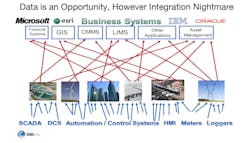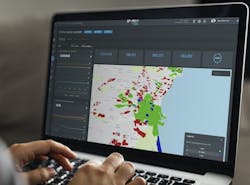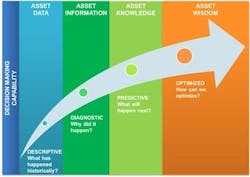Utilities Innovate at Pace of Need with Smart Technology Partners
Pablo Calabuig is U.S. CEO for GoAigua. Calbuig can be reached at [email protected].
Donna Kaluzniak a former utility diretor and current Editor for GlobalWaterWorks CONNECT. Kaluzniak can be reached at [email protected].
undefinedThe water sector is notoriously slow to adopt new equipment and technologies for various reasons. Risk-avoidance, clunky procurement procedures and strapped budgets are just a few them.
Because of this issue, while incredible technologies are here — and in use — they are unevenly distributed. New equipment and systems are especially lacking for small and medium utilities.
Sometimes, it takes a drastic event to shake things up.
Utility Challenges & Opportunities from COVID-19
COVID-19 has highlighted opportunities to move from talk to action when it comes to new technologies in the water sector.
As everyone knows but seldom thinks about, clean drinking water and proper wastewater collection and treatment are critical for protecting public health. Smart systems and digital innovations allow utilities to proactively manage their systems and even assist public health agencies. The physical requirements for managing resources constrained utilities through the coronavirus pandemic has been significant, but the financial burden imposed by the additional measures has created a mandate for lean operations and increased efficiency. The National Association of Clean Water Agencies estimates a $16.8 billion impact to clean water agencies, and the Association of Metropolitan Water Agencies and American Water Works Association estimate a $13.9 billion aggregate financial impact to drinking water utilities.
Experts detailed the steps in the digital transformation journey, including a breakthrough in real-time monitoring to track the presence of the virus in any community in a webinar hosted by GlobalWaterWorks May 12, 2020, and will be available on-demand Thursday, May 14, 2020.
Download Slides: How COVID-19 Made the Case for the Digital Transformation Journey |
From Data to Insight, Starting with a Data Hub
Water utilities are saturated with numerous data streams. All are important, but the data often exist in silos. Integrating the data so they provide actionable information is critical, especially during emergency situations.
The city of Riverside Public Utilities used OSIsoft’s PI System to create a water operations dashboard. The dashboard incorporated numerous software programs including its supervisory data acquisition and control (SCADA) system, GIS, grid sensors, weather, and more to monitor and operate its systems intelligently. In addition to improving operation, the dashboard increased efficiency and cost savings.
COVID Hot Spots: Tracking Coronavirus in the Sewer System
Researchers determined the virus that causes COVID-19 is found in wastewater and may indicate hotspots or predict outbreaks. For instance, water technology company GoAigua developed a method with the Spanish National Research Council to detect the virus’ locations through the sewer system in real time. GoAigua is now partnering with utilities in the U.S. to help monitor the spread and anticipate future COVID-19 outbreaks. This will help public officials designate areas where social distancing is needed, which will be crucial during the fall and winter when virus levels could peak again.
Water Demand Changes: Real Time Pressure Monitoring and Control
When large buildings and industries shut down in March, water system demand shifted from business/industrial to residential areas. Water use also declined as people were showering less and laundering less with social distancing. Toilet paper scarcity led people to use wipes and paper towels, clogging the sewer collection system.
Digital twins replicate real system behavior in a virtual model that serves as a basis for experimentation. In Spain, GoAigua’s parent company, Global Omnium, helped the city of Valencia transform its utility to a fully digital system. Digital twin technology can help operators adapt to every new or unusual situation. During this unprecedented event, Valencia’s digital twin allowed operators to understand the impact on the system. They were able to make efficient, effective decisions to keep the water and wastewater flowing.
Adapting to a Remote Workforce Culture: Data Discipline
In addition to the pre-pandemic shocks and stresses of hurricanes, sea level rise, and more, the utilities added those of COVID-19. Many utilities in the Southeastern U.S., resilience has been a key to success.
Working remotely challenged the staff to make the best use of “big data” to optimize operations. Again, actionable insights are key to making good decisions and taking the right actions.
Two integral parts of data discipline are cloud analytics and digital twins. Having data in the cloud improves the ability to perform complex analyses on very large data sets. Digital twins help machines tell their story to model how they will perform under certain conditions and monitor system performance in real time.
Using big data helped remote staff make informed decisions to improve operations and bolster resilience during emergency as well as during normal operations.
Preparing for the Next Round: The Water Tower
Whether a second peak or COVID-19 occurs or not, emergencies and disasters will always be on the horizon for utilities. Water research and innovation must continue forward to protect the public health and the environment.
The Water Tower’s mission is to be “a thriving ecosystem of water innovation fueled by imagination, informed by research and powered by pioneers.” Workforce development, training, and stakeholder engagement are also part of the process. Located in Gwinnett County, Georgia, the campus includes facilities hosting real-world applications and test conditions. Workspace for demonstration and validation is available. In addition, The Water Tower provides connections critical to get new technologies out for deployment.
From a Global Water Works Perspective
Operators now have the ability to marry technologies, including the use of artificial intelligence, sensors/data, digital twins, Cloud analytics, smart systems and more. It is now possible to connect the total water cycle and eliminate various silos of data to provide actionable information for our system operators.
These new technologies are becoming ever more important to creating efficient, effective, and resilient water systems. COVID-19 presented an opportunity to demonstrate the benefits of some cutting-edge technologies and how they can keep us safer. Those utilities who’ve placed themselves on the path to digital transformation are seeing a difference in as short as six weeks. The examples — spanning Global Omnium to Riverside, Hampton Roads and Gwinnett County — illustrate the time, risk and labor savings of digital transformation efforts are quickly recovered, enabling utilities to do more with less and in less time.
Let’s not waste this crisis. New innovations in the water industry really do serve the planet, people, and profit.





